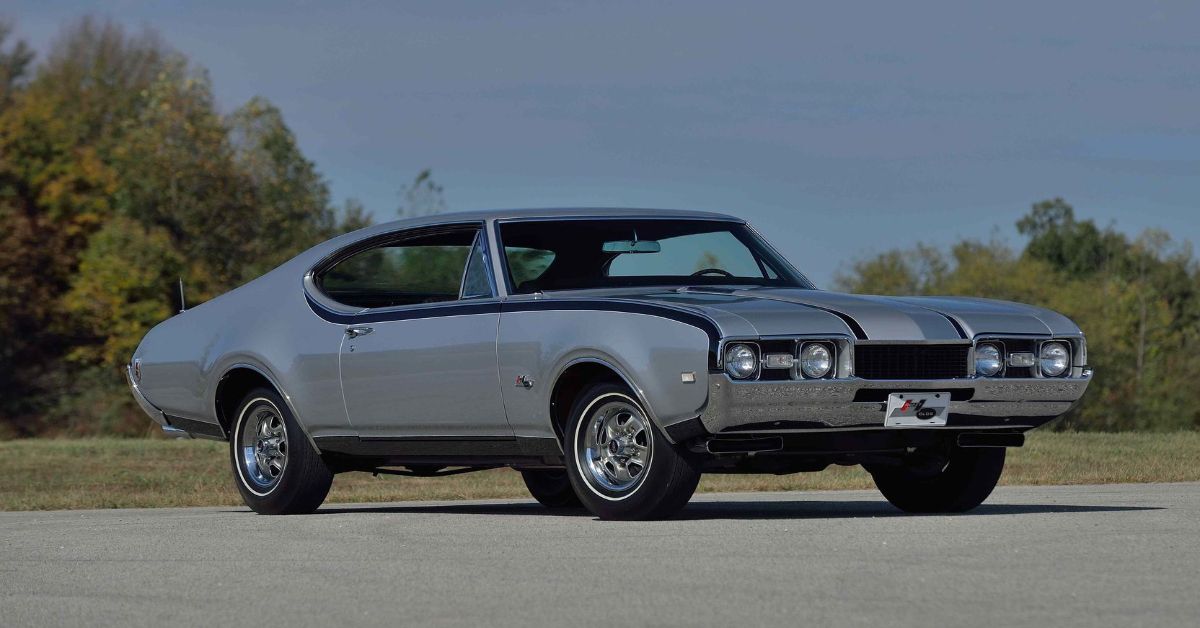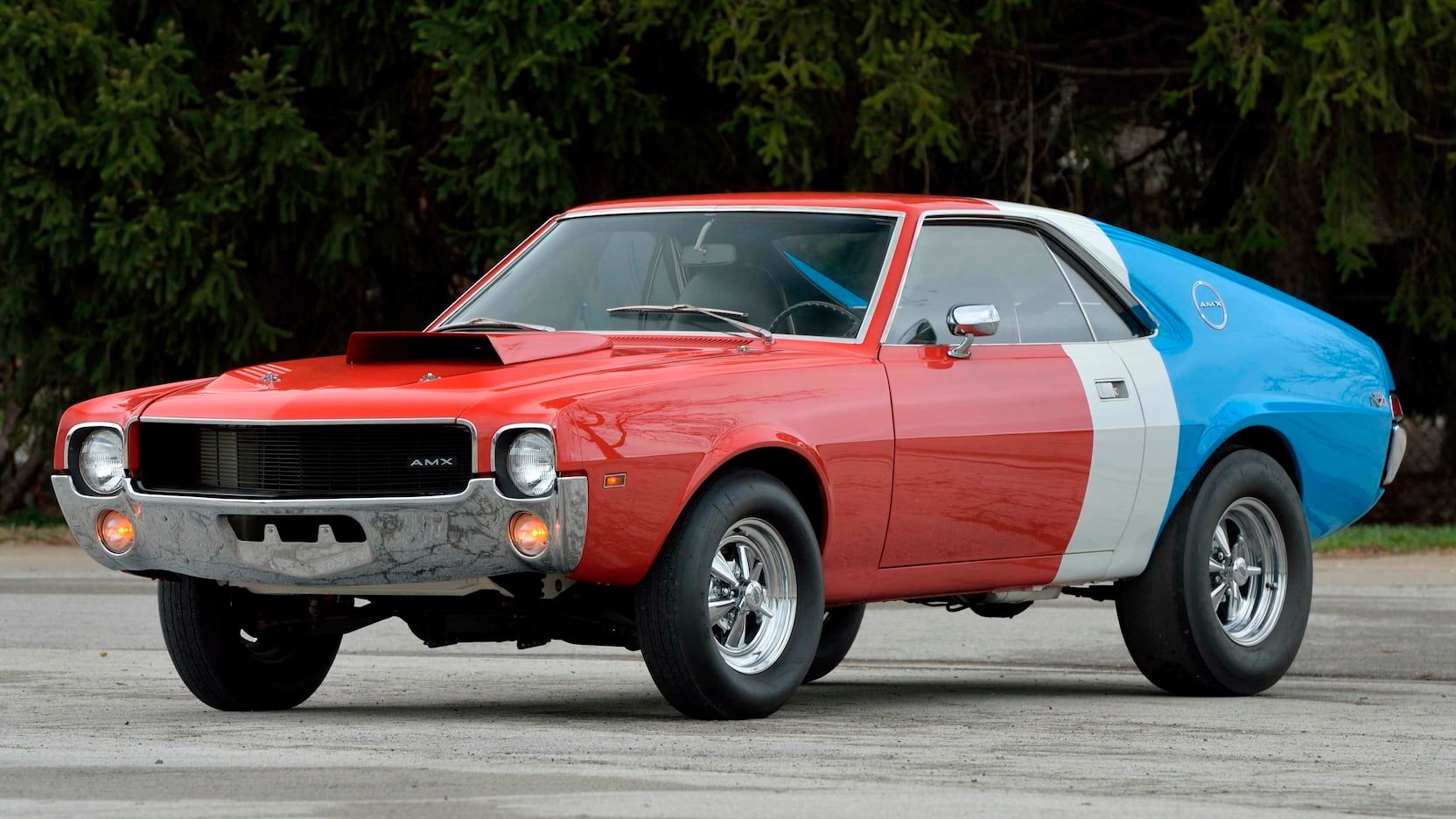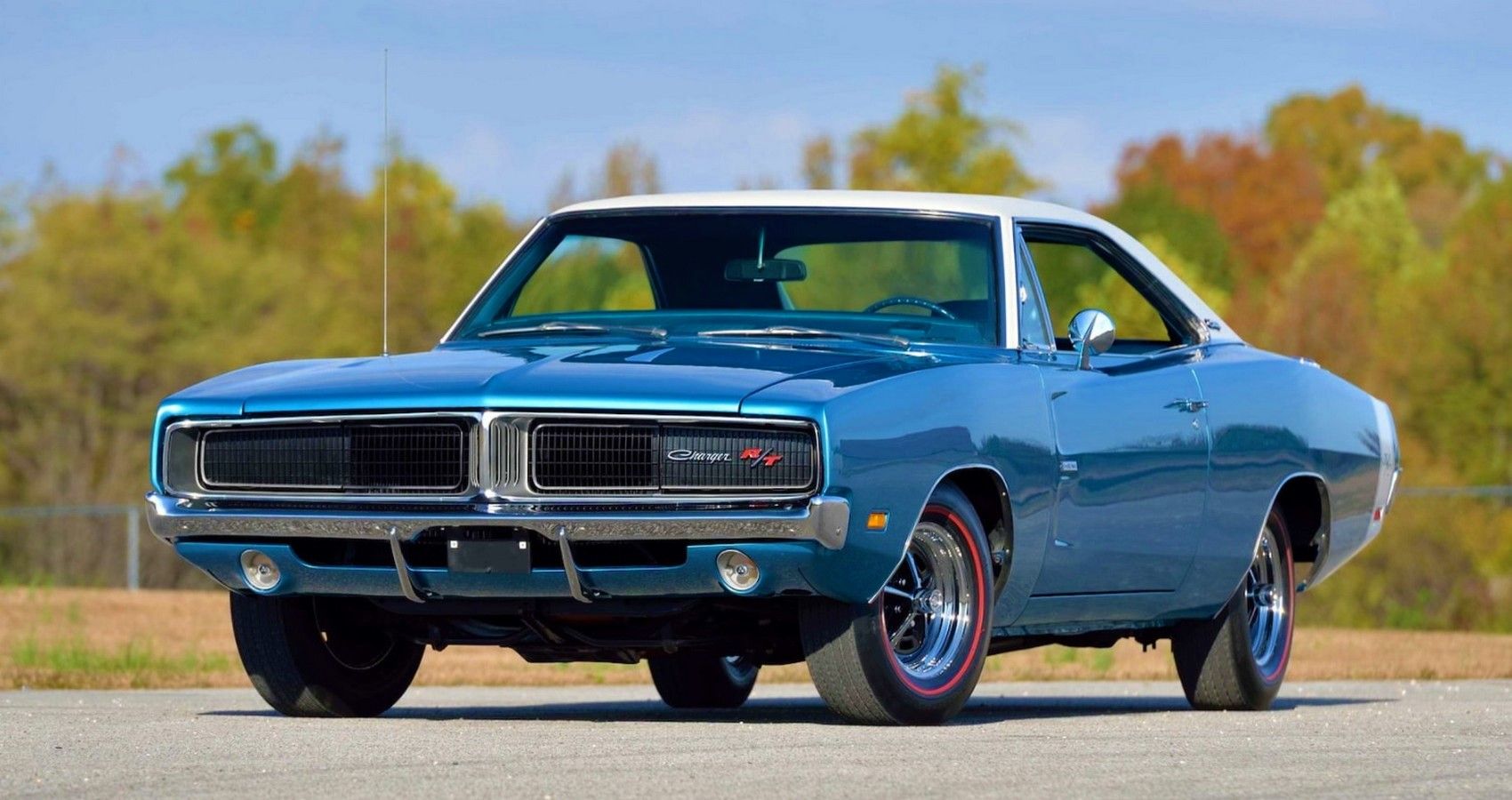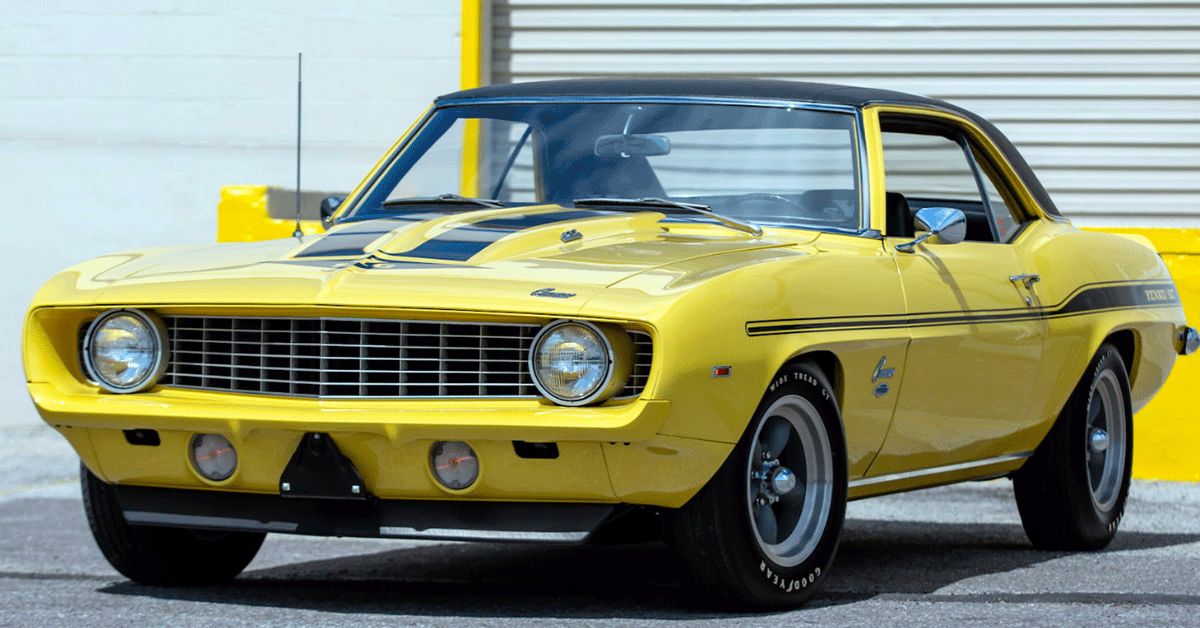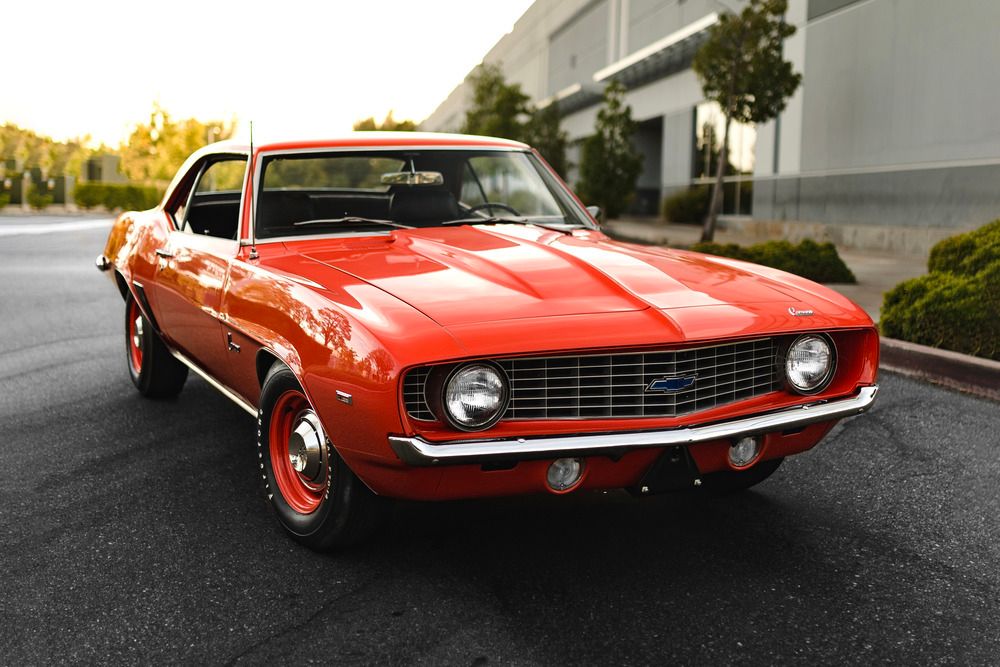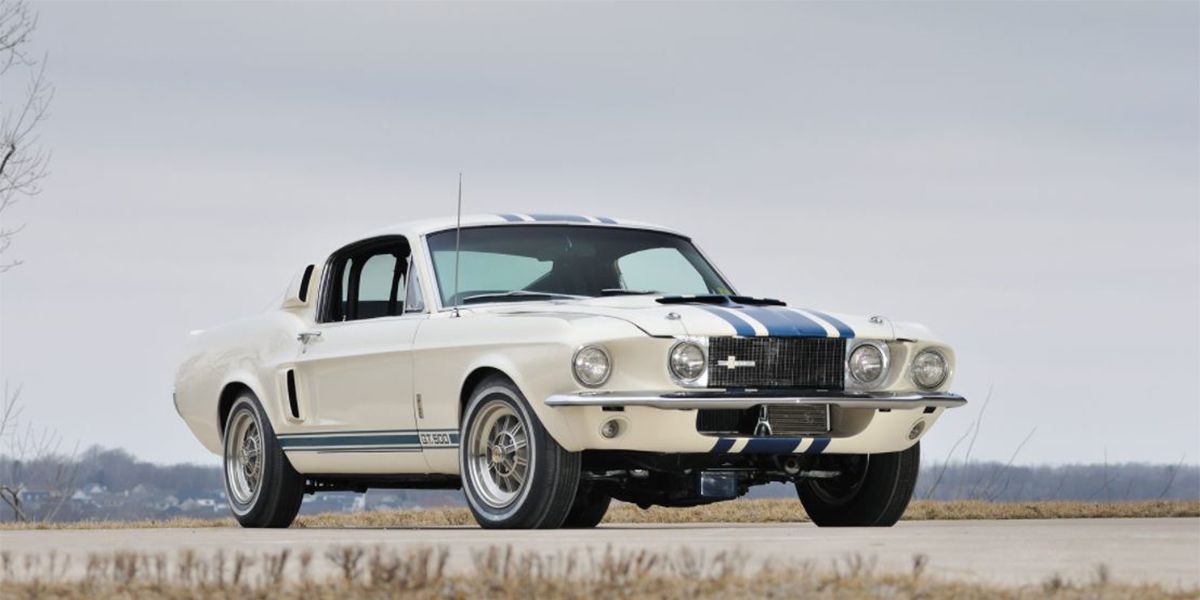With cheap gas prices, no harsh emission regulations and performance filtering down from the luxury models into affordable mainstream performance cars, many consider the 1960s the golden period for muscle cars. The classic muscle car era was in full swing, and almost every American automaker had offerings meant to dominate the drag strip with insane straight-line acceleration. It was a proven sales tactic, as a drag strip victory on the weekend would result in a hot-seller during the week. Besides sleek lines and new features to attract the masses, old muscle cars sported large V8 engines, with their sheer power and grunt bringing the famous horsepower wars.
The ’60s decade is the era that gave us some of the world’s most powerful American classic cars. Today, these beasts have become holy grail models, highly prized by collectors thanks to nostalgia and rarity. In 1964, we saw the introduction of the Pontiac GTO, widely considered by many older gearheads as the first true muscle car. Furthermore, Ford added the Mustang to its lineup, which became one of the brand’s most successful models.
Other popular classic muscle cars like the Pontiac Firebird Trans Am, Chevrolet Camaro, Chevrolet Chevelle SS, Dodge Hemi Charger, AMC AMX, Mercury Cougar Eliminator, Buick GS, Oldsmobile 442, and Plymouth’s GTX, Barracuda, Superbird and Road Runner, would also join the fray.
Representing the pinnacle of Americanclassic carsin sheer acceleration and grunt, here are the 10 most powerful ’60s muscle cars.
10 1968 Hurst/Olds – 390 Horsepower
Muscle car history would not be complete without the Oldsmobile 442, an already powerful muscle car in its own right, making 365 horses in 1968. Feeling pressure from rival muscle cars, Oldsmobile cooperated with Hurst Performance to shoehorn a 455 cubic-inch Toronado V8 into 515 units of the Oldsmobile Cutlass to avoid GM displacement limitations.
No other muscle car packed a larger V8 for 1968. With 390 hp and 500 lb-ft of torque on tap, the 1968 Hurst/Olds was one of the fastest ’60s muscle cars, reaching 60 mph in just 5.4 seconds. Other performance upgrades and special features included a heavy-duty suspension, power-assisted front disc brakes, and a Force Ram Air induction system.
9 1969 Plymouth Cuda 440 – 390 Horsepower
The 1969 Plymouth Cuda was brimming with horsepower. It had several powerful options, including Chrysler’s 440 Six Pack, one of the largest-displacement muscle car engines of the ’60s (7.2 liters). Filling the gap between the four-barrel 440 and the 426 Hemi, this V8 had three two-barrel carburetors and a more aggressive camshaft, boosting its power to 390 horsepower and 490 lb-ft of torque.
Gearheads loved the 440 cubic-inch Six Pack V8 engine for being less expensive, easier to work on, and more “streetable” than the 426 Hemi with nearly the same performance. It also powered other muscle cars from the ’60s, including the 1969-year Dodge Charger R/T, Coronet R/T, Super Bee, Plymouth GTX and Plymouth Road Runner. While the 440 Six Pack tag was for Dodge models, the Plymouth models got the Six-Barrel (Six BBL) tag.
8 1963 Pontiac Catalina 421 Super Duty ‘Swiss Cheese’ – 410 Horsepower
Pontiac was the dominant force in NASCAR and NHRA drag racing in the early ’60s. But other American carmakers were gaining ground with more powerful muscle car offerings near the mid-60s. Pontiac’s response was the all-out 1963 Catalina 421 Super Duty drag racer. Powering it was a purpose-built 421 cubic-inch Super Duty V8 engine, conservatively rated at 410 hp, even though actual output was significantly higher.
The “Swiss Cheese” moniker came from the car’s unique frame. Pontiac engineers drilled approximately 130 holes in strategic locations and did away with the boxed rails to save weight. They also removed the front sway bar as it was unnecessary for drag racing and used lightweight aluminum parts instead of steel. The result was a drag strip beast like no other, with Pontiac only producing 14 Swiss Cheese 421 Catalinas.
7 1969 Hurst/AMC Super Stock AMX – 420 Horsepower
Produced by AMC from 1968 to 1970 and based on the AMC Javelin platform, the AMC AMX SS was smaller in size than many other American muscle cars of the ’60s. But don’t dare underestimate it; like other ’60s muscle cars, it featured a big bad V8 engine.
The Hurst Super Stock AMX was the ultra-high-performance AMX SS, purpose-built for drag racing in a collaborative effort between AMC and Hurst Performance. It featured a tuned 390 cubic-inch V8 engine which, despite American Motors’ claim of only 340 hp, the NHRA rated it at an incredible 420 hp. Production was limited to only 52 units.
6 1968-1969 Dodge Charger R/T – 425 Horsepower
The most powerful Dodge muscle car of the ’60s was the 1968-1969 Dodge Charger R/T equipped with Chrysler’s 426 cubic-inch Hemi V8 engine. Good for 425 horsepower and 490 lb-ft of twist, this powerful engine was also optional in other models under the Chrysler brand, making the same power.
They include Dodge models like the 1969 Charger Daytona, as well as the 1968 and 1969 Dodge Super Bee. Not forgetting Plymouth muscle cars like the 1967-1969 Plymouth GTX, Plymouth Barracuda, and 1968-1969 Plymouth Road Runner also had this engine.
5 1969 Chevrolet Yenko Camaro – 425 Horsepower
By 1969, the Yenko dealership in Canonsburg, PA had difficulties meeting demand for the ever-increasing number of buyers who wanted the faster, more powerful muscle cars they could buy and drive straight to the drag strip without adding extra mods themselves. Being the go-to spot for the most badass Camaros, Yenko found switching the engines expensive and time-consuming.
Yenko’s solution was to exploit the COPO system, ordering 201 units using code 9561. These Camaros featured goodies like a custom ducted hood, two exhaust systems, J52 Power Disc Brakes, heavy-duty F-41 suspension, custom badges, and stripes, among others. But most important was the iron-block 427 cubic-inch L72 V8 engine. Producing an impressive 425 horsepower and 460 lb-ft of torque, skilled drivers could achieve quarter-mile times in the high 11 seconds and low 12 seconds.
4 1969 Chevrolet Chevelle SS – 425 Horsepower
The Chevelle Super Sport was a sportier and more powerful version of America’s most popular mid-size car of the 1960s, the Chevelle. It represented Chevrolet’s entry into the muscle car horsepower wars of the ’60s. For 1969, engine options included a 325-horsepower 396 cubic-inch V8, but even more powerful options of the 396 putting out 350 or 375 horsepower made the options list.
Beyond that, some Chevrolet dealers were able to purchase an even more powerful engine for the estimated 323-hp Chevelle two-door hardtops via the COPO program. Known as the L72, this 427 cubic-inch V8 engine could throw down a staggering 425 hp and 460 lb-ft of torque, making the 1969 Chevelle SS one of the most powerful ’60s muscle cars. This was before the Chevrolet SS 454 arrived for the 1970 model year.
3 1969 Chevrolet Camaro ZL1 – 430 Horsepower
Many consider the 1969 ZL1 the holy grail model in the Chevy Camaro world. Built by Chevrolet for NHRA Super Stock class homologation, only 69 units saw the light of day. Under the hood, the 1969 ZL1 Camaro featured a special block 427 cubic-inch V8 engine ordered via the COPO system.
Adapted from an engine originally developed for Can-Am racing, this V8 engine, code-named the ZL1, became Chevy’s first aluminum big-block engine. While it made 430 hp and 450 lb-ft on paper, its real output was around 530-550 hp per later dyno tests. The ZL1 engine made the ’69 Camaro one of the fastest 1960 muscle cars, capable of dispatching zero-to-60 mph in a mere 5.1 seconds and clocking 10.29 seconds at 132 mph in the quarter-mile sprint.
2 1967 Chevrolet Yenko Super Camaro – 450 Horsepower
Owned and operated by Don Yenko, the Yenko dealership was hugely famous among racing enthusiasts and gearheads in the 1960s and 1970s. And it’s because of its practice of selling the best high-performance Chevrolet muscle cars by swapping stock engines for big blocks. Remember, this was when GM had placed limitations on Chevrolet performance cars, forbidding engines larger than 400 cubic inches.
Instead of the stock engine, the 1967 Yenko Camaros (54 units) featured a 427 cubic-inch (7.0-liter) big-block V8 with an incredible 450 hp and 450 ft-lb, linked to a four-speed manual. Built for drag racing, these special Camaros could sprint from zero-to-60 mph in 5.4 seconds and reach 140 mph.
1 1967 Shelby GT500 Super Snake Ford Mustang – 600 Horsepower
Ford added the GT500 (355 hp) to the Mustang range in 1967, and Shelby didn’t take long to develop a Super Snake variant. The 1967 Shelby Mustang GT500 Super Snake was an ultra-high-performance GT500 built to test Goodyear’s Thunderbolt economy tires. Despite having 50 units planned, it remained a one-off since the recommended $8,000 sticker price was too expensive for buyers at the time.
Under the hood, it had a special lightweight 427 cubic-inch race engine from the Ford GT40 Mk II program. Although officially rated at 600 horsepower, it actually blasted close to 650 horsepower. The 1967 Shelby Mustang GT500 Super Snake could easily outrun the GT350 and GT500 in the 0-60 mph sprint, hit 170 mph (impressive for the time), making it the fastest muscle car of the ’60s.
Sources: Hemmings, Hagerty, Mecum Auctions, Barrett-Jackson, HowStuffWorks, Camaros.org
